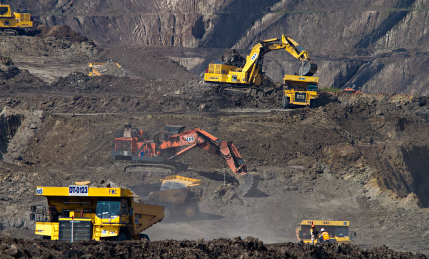Today, sustainable mining operations provide almost 20% of the copper that is produced globally. According to Copper Mark, more than 20% of the world's mined copper production now originates from locations that use ethical, sustainable mining methods.

Passed the Qualifications
In 2020, the copper industry established Copper Mark, a voluntary framework to support ethical manufacturing methods and show support for the Sustainable Development Goals of the United Nations.
The amount was reached after the addition of five new sites, including the Antucoya mine in Chile owned by Antofagasta, and the Compañia Minera Condestable in Peru owned by Southern Peaks Mining.
The other new members are the Olen NV site of Aurubis and the Mantos Blancos and Mantoverde mines of Capstone Copper, bringing the total number of participating sites to 42, according to Copper Mark.
According to John MacKenzie, CEO of Capstone Copper, "Copper is important to a low-carbon future, and it is incumbent upon us to guarantee that we supply this critical natural resource in as sustainable a manner as feasible."
Sustainable Mining

Globally, miners are increasingly trying to demonstrate their sustainability credentials as investors and consumers analyze the environmental impact of products.
Each mine site must satisfy 32 sustainability criteria, which address things like greenhouse gas emissions, health and safety, tailings management, biodiversity, business integrity, gender equality, and human rights, to be certified.
After that, evaluations are conducted every three years.
According to Michele Brülhart, executive director of the Copper Mark, "the new promises are indicative of a wider trend we are seeing from copper producers and customers who are increasingly understanding the necessity of establishing more responsible production techniques."
As part of the transition to a greener economy, "we expect this tendency to continue to develop."
Why is it vital to mine sustainably?
To encourage inclusive growth, sustainable mining is essential. The majority of minor minerals are extracted at India's large and small mines, which operate in the public, private, and unorganized sectors.
Global Efforts
Major mining corporations employ cutting-edge, all-encompassing environmental protection strategies, educate staff members about sustainability issues, and work to gradually enhance their environmental performance.
Major, medium, and even small businesses should protect the environment by rigorously adhering to the established regulatory requirements. These formalities are not followed when mining is carried out illegally. According to reports, illegal sand mining is largely to blame for the destruction of the environment, particularly the Ganges and Yamuna rivers' riverbeds. Political involvement and a lack of checks have made the situation dire. Even permitted mining violates regulations and harms the environment.
Government and business must adopt a broad perspective on sustainable development that considers factors other than the environment, like stakeholder participation and consultation, local socioeconomic development, and accountability and transparency in communication.
The permitting procedure for the award and management of a mining enterprise's mineral concession should include the creation of a socio-economic assessment report for a mining project. To avoid the issues of insufficient capability, political manipulation, and corruption, local socio-economic development projects should ideally be carried out by mining firms rather than government and semi-government entities.
Related Article : Overexploitation Largely Undermined an Underestimated, Says Experts
For more environmental news, don't forget to follow Nature World News!
© 2025 NatureWorldNews.com All rights reserved. Do not reproduce without permission.





